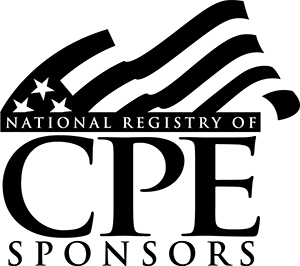CPE Monitor Newsletters
Dr. Art Kohn Explains How to Achieve the Optimal Learning Experience with Boosts and Bursts
01-Oct-2017Dr. Art Kohn, Professor at Portland State University School of Business, opened the 2017 National Registry Summit with a challenge to improve training by understanding how the brain operates and retains information for future recall.
Memory is about activating areas of the brain and scanning through those areas to recall what has been maximally stimulated. You create “confabulated memory” by pulling together details to create the best story to tell. Kohn referenced the Brian Williams case, in which the well-known news anchor recalled a memory as his own when in fact it happened to someone else. The brain works by starting with a stimulus, converting that stimulus to short-term memory and then applying rehearsal, which then moves the information into long-term memory. Short-term memory can revert to forgotten information if not used.
Art Kohn 1 from National Registry on Vimeo.
In short, the more activated your brain is during a specific length of time, the more likely you are to remember the information relayed to you. So, what is the best way to pre-activate your audience’s mindset? We must learn to teach in alignment with how the brain has evolved by organizing information into list form. When we teach in the traditional approach, people do not easily retain the information, because we are not teaching in line with the brain’s evolution.
“If students are not learning or retaining the information, it’s the instructor’s fault,” said Kohn. Use terms that are familiar to the learner and leverage them to teach new concepts. You need to understand your audience and what they do/do not know and you can achieve this by providing pre-requisite materials to determine the areas that require clarification and review. Also, when designing online training, the presenter should pause to ask rhetorical questions as this will activate participant’s minds during critical moments.
Emotion helps activate the brain, but it needs to be appropriate emotion that contributes to your goal, do not distract the learner. Incorporating emotion helps contribute to the learning objective, but be cognizant of being funny just to be funny.
If we are passive, we do not learn, so learners must be engaged every step of the way. As an instructor, you must find ways to allow the learner continuous interaction with the material. On average, 50 percent of information is forgotten after one hour, 70 percent in 24 hours and 90 percent of information is lost in a week. Therefore, what you do after a training is more important than what you do during. The brain has a “use it or lose it” approach, so the number of times we make use of information in the days or hours after a training is most important. Following a training, be sure to have booster events, which will allow the learner to recall information and can almost eliminate the forgetting curve. Kohn said, “Doing anything is dramatically better than doing nothing.”
Art Kohn 2 from National Registry on Vimeo.
Boost Help: artkohn.com/boostme


Add a Comment
Recent Comments